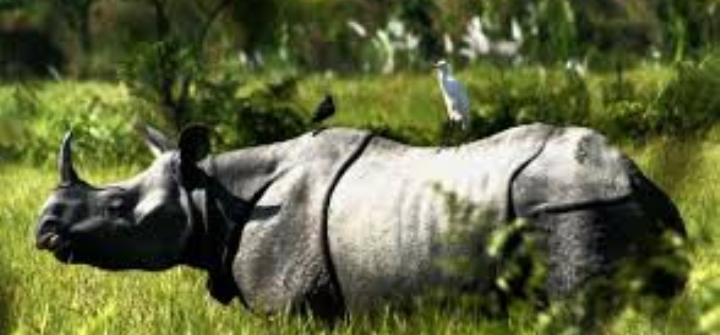Experts says if one-horned rhinos aren’t dispersed and scientifically trans located, the species may become extinct in Nepal.
At a programme to discuss the impact of climate change on rhinos organised by WWF Nepal in the capital, rhino expert and chief of WWF Nepal’s Hariyo Ban Programme Dr Shant Raj Gyawali said that climate change has resulted in the drying of many waterholes and water sources, causing the rhinos to migrate to the southern low land of Nepal in search of water. “Climate change has forced rhinos to move to the southern parts of Chitwan, Bardiya, and Karnali,” he said.
He warned that if the government and conservation partners don’t pay attention to this migration, rhinos may become extinct in Nepal. “Urbanisation has already destroyed much of their habitat; climate change is causing the vegetation to change very fast,” he said, adding, “The rhinos must be dispersed in groups and trans located to areas with adequate water and vegetation at the earliest.”
WWF Nepal’s conservation biologist Kanchan Thapa said, “Although Chitwan National Park is celebrating 1,000 days of zero poaching of rhinos this Friday, there are still other threats that must be combated.” He said, “Decreasing grasslands, rampant infrastructure development, encroachment and human-wildlife conflict has threatened the existence of rhinos in our country.”
At the programme, WWF Nepal launched a report titled ‘The Greater One-horned rhinos: Past, Present, and Future 2016’ for the first time in Nepal, on the eve of the 1,000 Days’ celebration of zero poaching of rhinos. The report has explained Nepal, India, and Bhutan have jointly set a target of increasing the rhino population to 4,000 by 2020, thus removing this species from the Red list of IUCN.
There are 11 protected areas spread across the three range countries — Nepal, India and Bhutan — where two trans-boundary landscapes and two rhino hubs lie in Assam of India, and Chitwan of Nepal.
According to the count of 2015, a total of 645 individuals of the one-horned rhinoceros (Rhinoceros unicornis) was recorded in Nepal, 111 more than the count of 2011 that stood at 534.
The oldest national park CNP is home to 605 individual rhinos, making it the largest rhino-bearing protected area in the country.
Similarly, Bardia National Park, Shuklaphanta National Park, and Parsa Wildlife Reserve, has 29, eight, and three rhinos in and around the surrounding areas respectively.

